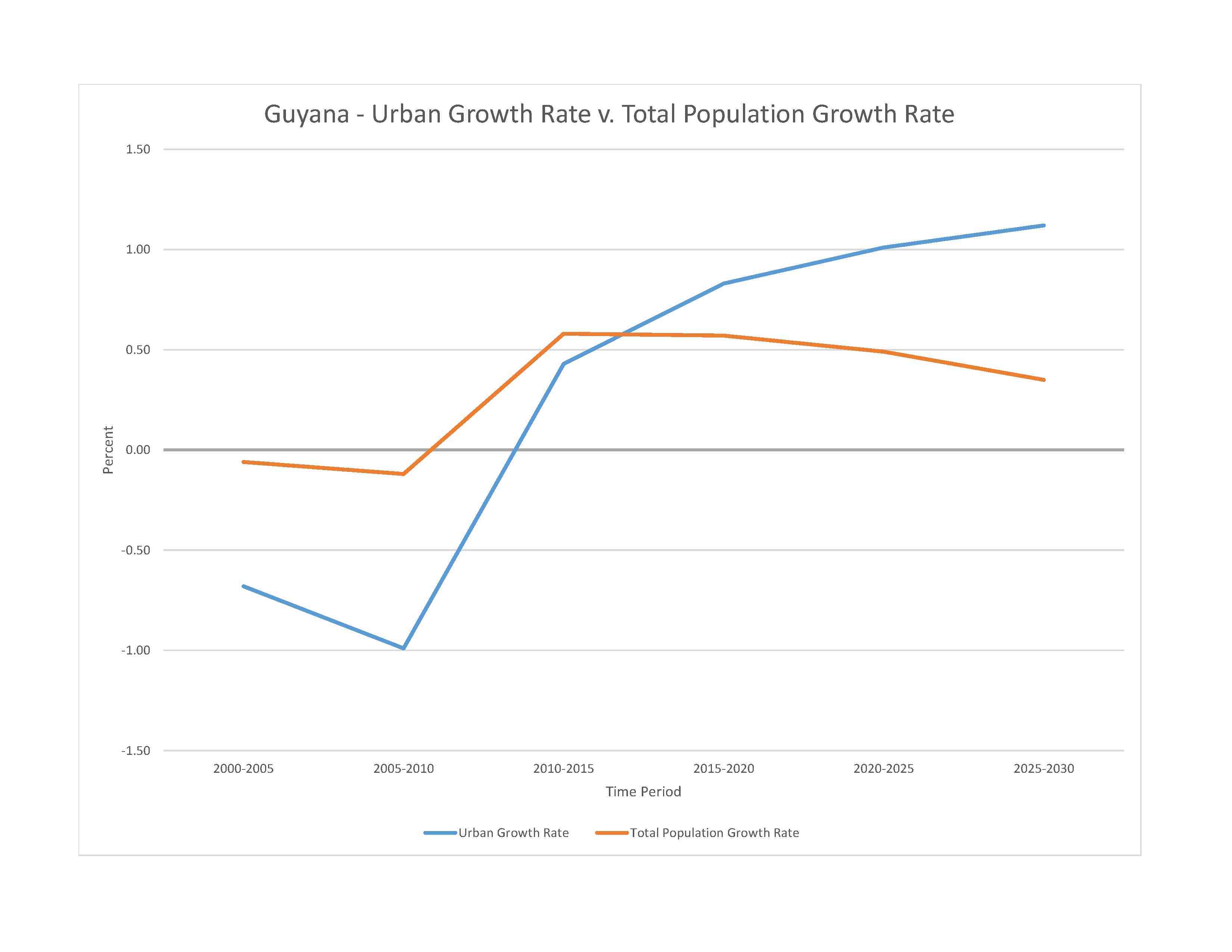
791,739 (2023 est.)
noun: Guyanese (singular and plural)
adjective: Guyanese
East Indian 39.8%, African descent 29.3%, mixed 19.9%, Amerindian 10.5%, other 0.5% (includes Portuguese, Chinese, White) (2012 est.)
English (official), Guyanese Creole, Amerindian languages (including Caribbean and Arawak languages), Indian languages (including Caribbean Hindustani, a dialect of Hindi), Chinese (2014 est.)
Protestant 34.8% (Pentecostal 22.8%, Seventh Day Adventist 5.4%, Anglican 5.2%, Methodist 1.4%), Hindu 24.8%, other Christian 20.8%, Roman Catholic 7.1%, Muslim 6.8%, Jehovah's Witness 1.3%, Rastafarian 0.5%, other 0.9%, none 3.1% (2012 est.)
Guyana is the only English-speaking country in South America and shares cultural and historical bonds with the Anglophone Caribbean. Guyana's two largest ethnic groups are the Afro-Guyanese (descendants of African slaves) and the Indo-Guyanese (descendants of Indian indentured laborers), which together comprise about three quarters of Guyana's population. Tensions periodically have boiled over between the two groups, which back ethnically based political parties and vote along ethnic lines. Poverty reduction has stagnated since the late 1990s. About one-third of the Guyanese population lives below the poverty line; indigenous people are disproportionately affected. Although Guyana's literacy rate is reported to be among the highest in the Western Hemisphere, the level of functional literacy is considerably lower, which has been attributed to poor education quality, teacher training, and infrastructure.
Guyana's emigration rate is among the highest in the world - more than 55% of its citizens reside abroad - and it is one of the largest recipients of remittances relative to GDP among Latin American and Caribbean counties. Although remittances are a vital source of income for most citizens, the pervasive emigration of skilled workers deprives Guyana of professionals in healthcare and other key sectors. More than 80% of Guyanese nationals with tertiary level educations have emigrated. Brain drain and the concentration of limited medical resources in Georgetown hamper Guyana's ability to meet the health needs of its predominantly rural population. Guyana has one of the highest HIV prevalence rates in the region and continues to rely on international support for its HIV treatment and prevention programs.
0-14 years: 23.65% (male 95,605/female 91,654)
15-64 years: 68.49% (male 281,157/female 261,113)
65 years and over: 7.86% (2023 est.) (male 27,269/female 34,941)
total dependency ratio: 53.6
youth dependency ratio: 44.1
elderly dependency ratio: 9.5
potential support ratio: 10.6 (2021 est.)
total: 27.9 years (2023 est.)
male: 27.8 years
female: 28 years
0.28% (2023 est.)
16.7 births/1,000 population (2023 est.)
7 deaths/1,000 population (2023 est.)
-7 migrant(s)/1,000 population (2023 est.)
population is heavily concentrated in the northeast in and around Georgetown, with noteable concentrations along the Berbice River to the east; the remainder of the country is sparsely populated
urban population: 27.2% of total population (2023)
rate of urbanization: 1.01% annual rate of change (2020-25 est.)

110,000 GEORGETOWN (capital) (2018)
at birth: 1.05 male(s)/female
0-14 years: 1.04 male(s)/female
15-64 years: 1.08 male(s)/female
65 years and over: 0.78 male(s)/female
total population: 1.04 male(s)/female (2023 est.)
20.8 years (2009 est.)
note: data represents median age at first birth among women 25-29
112 deaths/100,000 live births (2020 est.)
total: 21.6 deaths/1,000 live births (2023 est.)
male: 24.5 deaths/1,000 live births
female: 18.7 deaths/1,000 live births
total population: 72.2 years (2023 est.)
male: 70.3 years
female: 74.1 years
2.06 children born/woman (2023 est.)
1 (2023 est.)
29.9% (2019/20)
improved: urban: 100% of population
rural: 95.6% of population
total: 96.8% of population
unimproved: urban: 0% of population
rural: 4.4% of population
total: 3.2% of population (2020 est.)
5.5% of GDP (2020)
1.42 physicians/1,000 population (2020)
1.7 beds/1,000 population (2016)
improved: urban: 97.8% of population
rural: 95.4% of population
total: 96% of population
unimproved: urban: 2.2% of population
rural: 4.6% of population
total: 4% of population (2020 est.)
degree of risk: very high (2023)
food or waterborne diseases: bacterial and protozoal diarrhea, hepatitis A, and typhoid fever
vectorborne diseases: dengue fever and malaria
20.2% (2016)
total: 5.11 liters of pure alcohol (2019 est.)
beer: 2.75 liters of pure alcohol (2019 est.)
wine: 0.04 liters of pure alcohol (2019 est.)
spirits: 2.3 liters of pure alcohol (2019 est.)
other alcohols: 0.02 liters of pure alcohol (2019 est.)
total: 12.1% (2020 est.)
male: 21.7% (2020 est.)
female: 2.4% (2020 est.)
9.4% (2019)
62.6% (2023 est.)
4.5% of GDP (2018 est.)
definition: age 15 and over has ever attended school
total population: 88.8%
male: 89.3%
female: 88.4% (2021)
total: 11 years
male: 11 years
female: 12 years (2012)
NOTE: The information regarding Guyana on this page is re-published from the 2024 World Fact Book of the United States Central Intelligence Agency and other sources. No claims are made regarding the accuracy of Guyana 2024 information contained here. All suggestions for corrections of any errors about Guyana 2024 should be addressed to the CIA or the source cited on each page.
This page was last modified 04 May 24, Copyright © 2024 ITA all rights reserved.